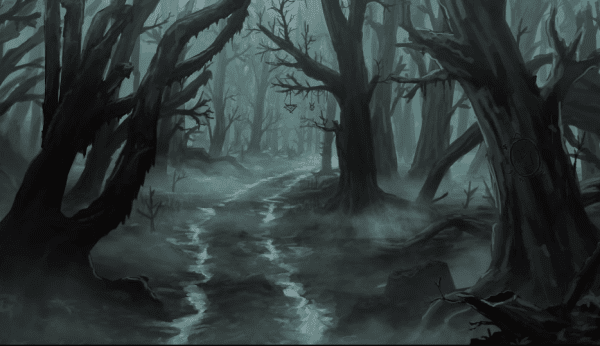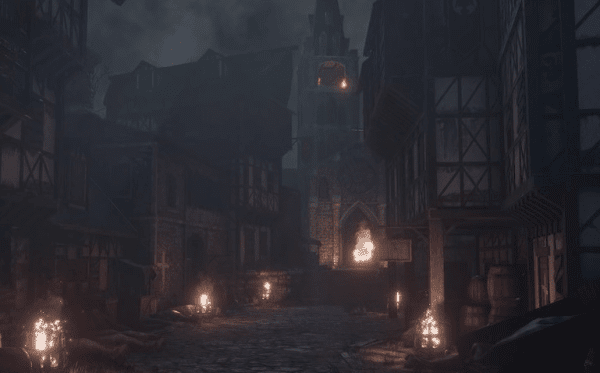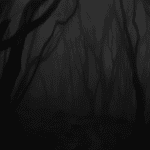As some Chinese general guy once said: Knowing the terrain is pretty dope. In DnD 5e, the landscape can have quite some effect on the battle. Today we will look at how Heavily Obscured 5e works and give examples of this terrain status in action. Like we often do, we will also answer some of the most frequently asked questions about Heavily Obscured in 5e DnD.
We aim to remove all the confusion and questions about this for players and DMs, so you can have a smoother campaign that doesn’t involve looking up things every 5 seconds. Let’s dive in!
What exactly is Heavily Obscured in 5e DnD?
To find the definition of Heavily Obscured, we need to look at page 183 of the official Player’s Handbook. There you will see the following information:
“A heavily obscured area–such as darkness, opaque fog, or dense foliage–blocks vision entirely. A creature effectively suffers from the blinded condition when trying to see something in that area.”
There are a couple of things we can deduct from this short bit of text:
- Area: There is no limit on the size of the area. The area can be a couple of feet and an infinite number of miles.
- Darkness, Opaque Fog, or dense foliage: Opaque fog is not the same as fog. So Fogcloud 5e is not going to create a heavily obscured Area. Dense foliage means thick. This means weeds, shrubbery, bushes, and trees. Think about almost an impenetrable rainforest, not your average forest.
- Creature: the heavily obscured area only affects animals, not the range of spells or how magical items work. Of course, spells can get caught in dense foliage or blast into trees.
- Blinded: the creature suffers from the blinded condition when it tries to see something INSIDE the area. When it looked next, there was no suffering from this condition.

When you are shooting a spell inside the area (even from the outside) or fighting in the area, you suffer from being blind. However, all other status conditions are unaltered. This status is fascinating when you are inside the area, and the opponent is outside or the other way around.
If you are inside the area and your target is outside, you might be able to argue that you are not blinded, but your opponent is. The reason is that you are inside the area but are looking outside while your opponent is trying to look inside. Therefore, you are not trying to see something in the area.
Your DM can (and should logically) change this to ensure both are suffering from the blinded condition, as it makes little sense that something inside would not be blinded.
What about attacks?
If you are doing a ranged spell attack or another kind of attack, you will have a disadvantage on the attack since you can not see your target. But, on the other hand, you get an advantage against creatures inside the heavily obscured area, so you will fight like usually without any advantages or disadvantages.
Can you take cover in the Heavily Obscured area?
This depends on the area. To have total cover in 5e dnd, you need to be concealed entirely by an obstacle. Darkness and opaque fog are likely not to be considered obstacles, even if they cause blindness. However, the argument can be made that foliage is an obstacle. In that case, you can use the heavily obscured 5e area as a way to take cover.
However, your DM might say that the foliage is just tall grasses and bushes. Then you might argue it is not on the same level as other obstacles like solid rock and gives similar resistance to water, which is not an obstacle.
Spells that make an Area Heavily Obscured
A few spells might be interesting if you want to make a heavily obscured area.
Fog Cloud: when you cast a fog cloud, you have a sphere of 20 feet of heavily obscured space.
Darkness: when you use this spell, you conjure a magical dark zone with the same effects.
Both spells are okay. However, they aren’t strong unless you are experienced using the terrain to your advantage. If you want to use the effects to their maximum potential, I advise you to read the next chapter!

How to use a Heavily Obscured Area like a pro
- Use an area of effect spell: not sure where your target is? Just use a spell with a wide area of effect like Circle of Death to make sure you hit them!
- Get rid of advantages: if your opponent has an advantage over you, then an excellent way to take that away is to make them blind by obscuring their vision.
- Hiding: Are you on the run? Then an area where your enemy, if practically blind, is a pretty great hiding spot, don’t you think? This makes it much harder to grab you and press you into fighting.
- As a counter: imagine a fairy creature or wizard is shooting faerie fire at you. You can use a spell-like Fog Cloud or Darkness to avoid being hit by this. Another good spell to counter with this is Hold Monster or Hold person. They need to see the target to do the spell, so great to counter.
- Pranks: Not everything has to be serious in DnD. If you want to mess with your players, you can add Fogcloud to the spells of Faerie Dragons. These monsters love to mess with adventurers.
Heavily Obscured 5e FAQ
Can we see through heavily obscured 5e?
There are several ways to see through a heavily obscured area in 5e DnD or at least negate its effects. If you have truesight, you can see through the darkness if it has a magical nature. You can also see through it with blindsight, as you do not need to have the vision to see what is in the area.
There is also darkvision, which allows you to see a certain distance as if it were daylight, and then there is Devil’s sight which will enable you to pierce pitch black darkness with your gaze and see through it. The thing with darkvision is that it only works with regular darkness (abscess of light in, e.g., a tunnel), not when the darkness is magical.
Does TrueSight negate heavily obscured?
Yes, there are a couple of ways to pierce the Heavily Obscured zone and see what is inside. One of these ways is to use True sight when the darkness is magical. E.g., the darkness is caused by the darkness spell. However, as far as I know, it won’t pierce through the thick foliage.
Does a heavily obscured creature get an advantage?
No, the advantages and disadvantages neutralize one another. So, if a monster has an advantage on its attack rolls, but an area gets heavily obscured, it gets a disadvantage if it has been blinded by it (e.g., no darkvision, truesight). The result is that there is neither an advantage nor a disadvantage.
What to remember
When you are confronted with Heavily Obscured in 5e DnD, there are a couple of things you need to keep in mind. First, if you don’t have an advantage on attack rolls, you will have a disadvantage; if you do have an advantage, it will be canceled out.
There are also a couple of ways to pierce obscurity. A couple of good ways are with Truesight, Darkvision, and Devil’s sight. These can see through (magical) darkness and allow you to find your enemies easily.
Finally, Heavily Obscured areas are also a great place for you to hide in. If your enemy cannot find you, you can escape them more easily. You can also use zones like that to lay an ambush.
